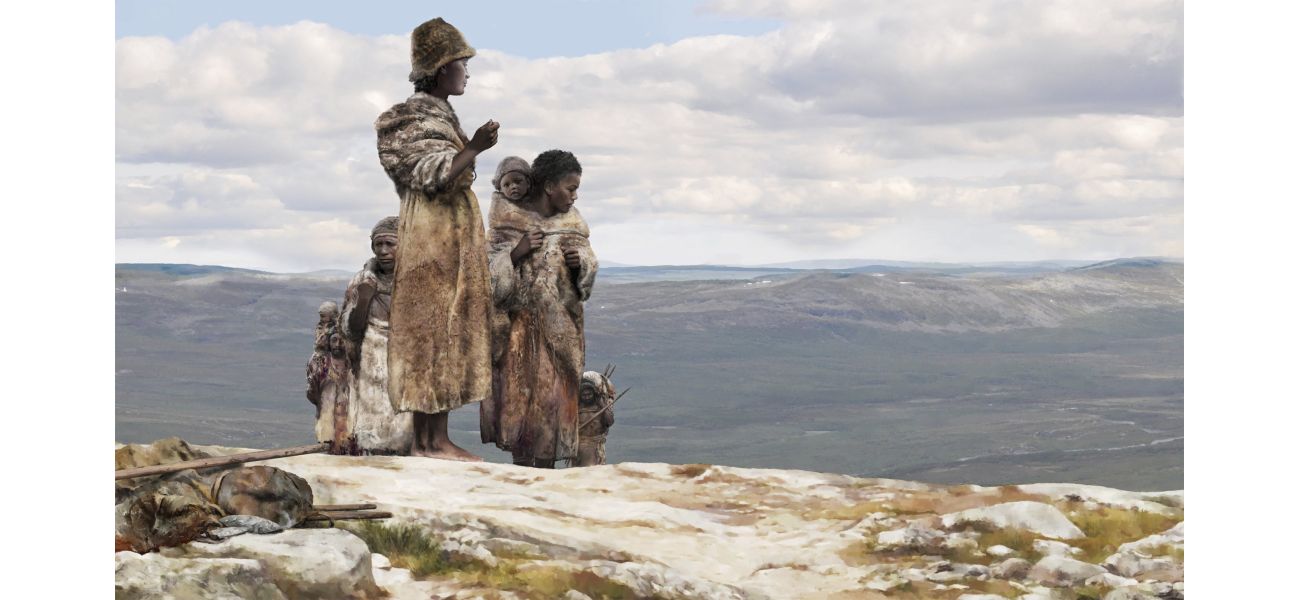Genetic research shows precise timing of when Humans and Neanderthals merged.
Recent study reveals how ancient relatives aided in the success of humans.
December 15th 2024.

According to new research, the story of modern humans is not as straightforward as previously thought. It turns out that humans went extinct multiple times before ultimately becoming the most successful mammal on the planet. The key to their success? Interbreeding with a group of archaic humans known as Neanderthals.
Around 45,000 years ago, humans and Neanderthals were mingling and interbreeding, as revealed by new DNA research. This discovery sheds light on how our long-lost cousins contributed to our success. Previously, it was believed that Neanderthals were a species dominated by humans after we left Africa. However, this new research shows that the humans who interbred with Neanderthals were the ones who went on to thrive, while other bloodlines died out.
Not only did the interbreeding contribute to the survival of early humans, but it also played a crucial role in protecting them from new diseases. Genes passed on from Neanderthals helped strengthen humans' immunity to diseases that they had not previously encountered. This was especially important for humans who left Africa around 48,000 years ago and ventured into the wider world.
Before this period, some populations of Homo sapiens had already left Africa, but those who did not interbreed with Neanderthals did not survive. These new findings have led to the realization that the history of modern humans will need to be rewritten. According to Professor Johannes Krause of the Max Planck Institute of Evolutionary Biology in Germany, "we see modern humans as a big story of success, coming out of Africa 60,000 years ago and expanding into all ecosystems to become the most successful mammal on the planet. But early on, we were not, we went extinct multiple times."
Today, modern humans can have up to 4% Neanderthal DNA in their genes, particularly among those of European origin. As scientists continue to understand the ancient genome, more and more modern traits are being traced back to the time when early humans interbred with their Neanderthal cousins.
Anthropologist Arev Sümer and Prof Johannes Krause from the Max Planck Institute of Evolutionary Biology analyzed the nuclear genomes of six individuals found in Germany and the Czech Republic, dating back around 45,000 years. These individuals, previously identified as Homo sapiens based on their maternal mitochondrial DNA, were found to have a fifth- or sixth-degree genetic relationship with each other. This suggests that they were part of the same extended family and likely shared a common tool-making culture.
In conclusion, the discovery of interbreeding between early humans and Neanderthals sheds light on the complex history of modern humans. It highlights the importance of genetic diversity and how it played a crucial role in our survival and success as a species.
Around 45,000 years ago, humans and Neanderthals were mingling and interbreeding, as revealed by new DNA research. This discovery sheds light on how our long-lost cousins contributed to our success. Previously, it was believed that Neanderthals were a species dominated by humans after we left Africa. However, this new research shows that the humans who interbred with Neanderthals were the ones who went on to thrive, while other bloodlines died out.
Not only did the interbreeding contribute to the survival of early humans, but it also played a crucial role in protecting them from new diseases. Genes passed on from Neanderthals helped strengthen humans' immunity to diseases that they had not previously encountered. This was especially important for humans who left Africa around 48,000 years ago and ventured into the wider world.
Before this period, some populations of Homo sapiens had already left Africa, but those who did not interbreed with Neanderthals did not survive. These new findings have led to the realization that the history of modern humans will need to be rewritten. According to Professor Johannes Krause of the Max Planck Institute of Evolutionary Biology in Germany, "we see modern humans as a big story of success, coming out of Africa 60,000 years ago and expanding into all ecosystems to become the most successful mammal on the planet. But early on, we were not, we went extinct multiple times."
Today, modern humans can have up to 4% Neanderthal DNA in their genes, particularly among those of European origin. As scientists continue to understand the ancient genome, more and more modern traits are being traced back to the time when early humans interbred with their Neanderthal cousins.
Anthropologist Arev Sümer and Prof Johannes Krause from the Max Planck Institute of Evolutionary Biology analyzed the nuclear genomes of six individuals found in Germany and the Czech Republic, dating back around 45,000 years. These individuals, previously identified as Homo sapiens based on their maternal mitochondrial DNA, were found to have a fifth- or sixth-degree genetic relationship with each other. This suggests that they were part of the same extended family and likely shared a common tool-making culture.
In conclusion, the discovery of interbreeding between early humans and Neanderthals sheds light on the complex history of modern humans. It highlights the importance of genetic diversity and how it played a crucial role in our survival and success as a species.
[This article has been trending online recently and has been generated with AI. Your feed is customized.]
[Generative AI is experimental.]
0
0
Submit Comment





